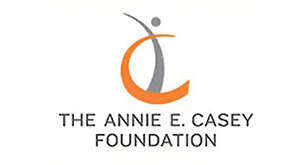FAMILY TIES: ANALYSIS FROM A STATE-BY-STATE SURVEY OF KINSHIP CARE POLICIES
DEFINING KINSHIP DIVERSION
Many families rely on kin — relatives and close family friends — to provide support in times of crisis or when a parent may need extra help. It is common for kin to step in to provide in-home help or care for a child in their own homes without any child welfare system involvement. In fact, more than 7.5 million children live with a relative who is the head of the household, and an estimated 2.5 million children live with kinship caregivers without a parent present. Most of these arrangements are set up privately, with families deciding how best to care for each other.
A subset of these families experience involvement with the child welfare system. During an investigation or while providing a family with services to prevent entry into foster care, a caseworker may facilitate a placement or arrangement with a relative or close family friend. The arrangement may move the child into a relative’s home or help a relative move in with the birth family to become the primary caregiver. This usually avoids placing the child in foster care or involving dependency court. In many of these arrangements, there are no formal findings of abuse or neglect and the parents retain legal custody of the child during the arrangement.
This brief refers to these arrangements as kinship diversion. The practice takes many forms and can be known by or associated with other terms, including safety planning, voluntary placement, parental placement, redirection, informal kin care, hidden foster care, shadow foster care, coerced care and prevention services. States and communities define, practice, support, oversee and document kinship diversion very differently.
NEW DATA TO INFORM A CONTINUING DEBATE
The survey’s findings advance the field’s understanding of widely used interventions for which limited data have been publicly available. Among the key findings:
- Thirty-three jurisdictions have policies allowing kinship diversion. Among them, 15 provide direct assistance and resources to kinship caregivers. In most states, children and caregivers in kinship diversion arrangements have significantly less access to services and financial support than those in formal (licensed or unlicensed) kinship care placements, in which the children are in the custody of the child welfare agency.
- Only one-third of states with policies that allow kinship diversion give parents the final decision making authority in kinship diversion arrangements. In others, a child welfare agency may separate a child from parents and direct the kinship placement without the judicial oversight and time limits for placements that come with formally taking the child into child welfare custody.
- Agency involvement and oversight in kinship diversion arrangements vary dramatically by jurisdiction. Some states’ policies require the agency to investigate, open a case, monitor or set time limits for kinship diversion placements. Only two states require court oversight.
- Survey respondents provided valuable information that can inform policymaking and advocacy aimed at ensuring states are safeguarding children, protecting parents’ rights and providing needed resources for kinship caregivers and the children in their care.
WHEN A CHILD WELFARE AGENCY STEPS IN
Families should have the ability to make arrangements with kin for the care of their children at a moment of crisis or stress, in safe and supported ways that make sense for them — as families have done for ages. They should be free to do so without unnecessary government intervention.
When a child welfare agency steps in to facilitate this type of arrangement, the agency has a unique responsibility to ensure, at a minimum:
- Parents and caregivers are informed of the options in their jurisdiction and are the ultimate decision makers about arrangements that divert children from foster care;
- Children are safe;
- Kinship caregivers and children in their care have the resources they need.
Regardless of how diversion is defined, these are clear parameters that must be considered to protect the rights of children, parents and kinship caregivers and to meet the children’s and families’ needs. Because states define and practice kinship diversion differently and because there are no federal reporting requirements on diversion practices, the child welfare field lacks important data to explain how their practices can achieve these goals. How well do the states’ policies protect parental rights and improve outcomes for children and youth? It is unclear, for example, how many children in kinship diversion arrangements reunite with their parents.

